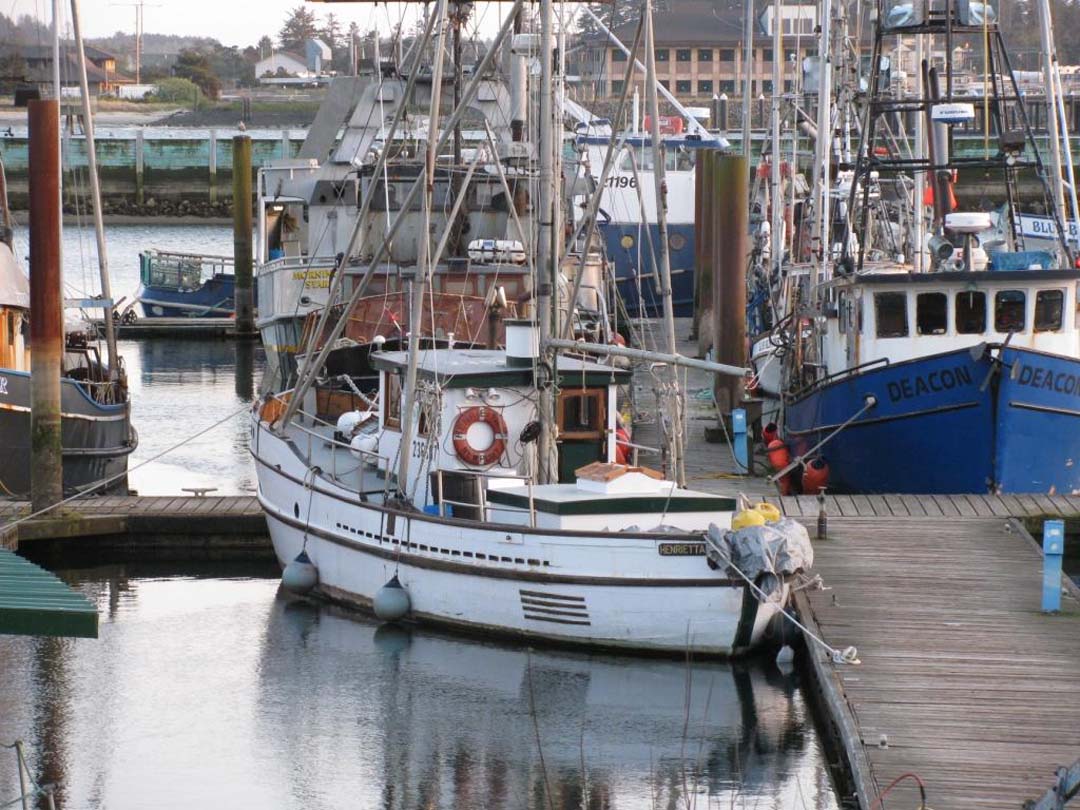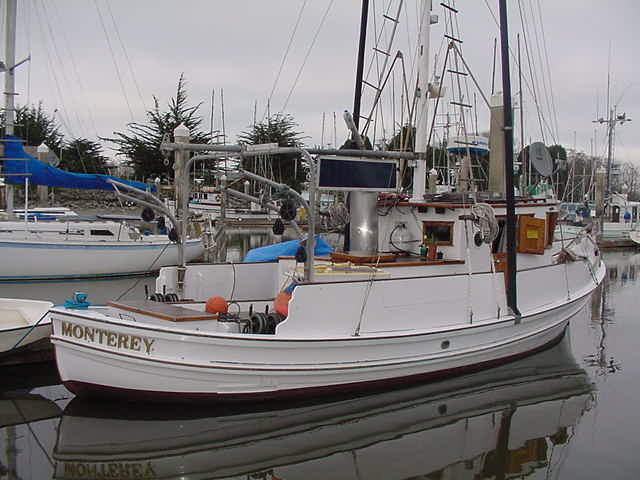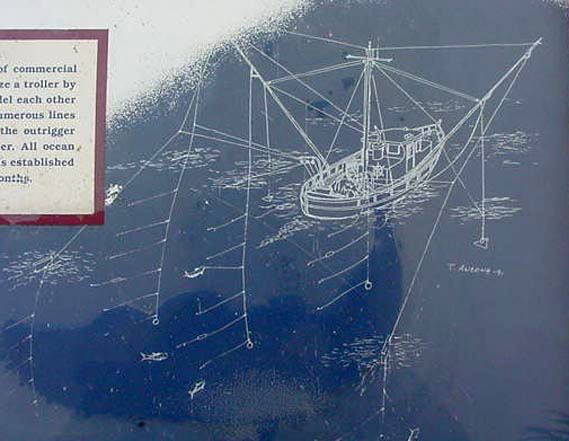
A Troller catches fish by trolling lines, and the above drawing, taken from a public information display at an Oregon dock, shows a traditional troller with all lines out. Boats like this were frequently run by one person. I personally don’t have a clue how you work the damned things but I AM going to learn. Below are a pictures (2011) of a very serious little troller, in Westport, Washington. Look at the poles and wires! It would be a real kick to go out once and film how the guy does it all!
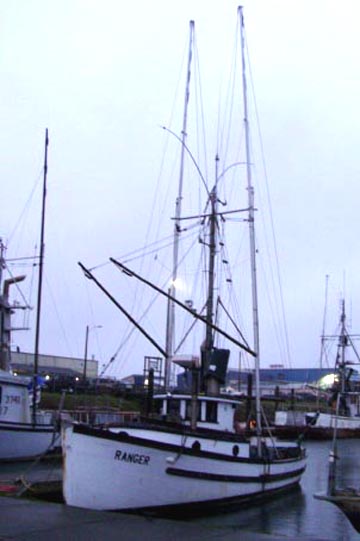 |
 |
|
I’ve watched this boat for years. She always looks taken care of. Hopefully one day I’ll see the owner and offer my services as The “Master Baiter”, what they called me when I worked a charter boat many years ago. It would be a real “kick” to see how to work her.
|
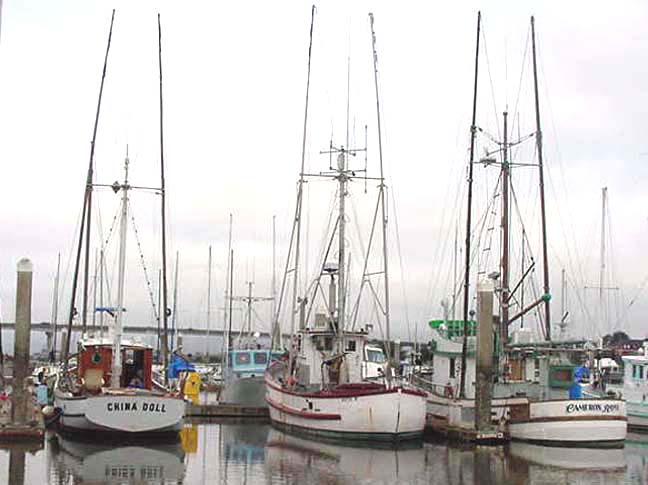 |
This photo shows the three typical stern types. They all share the characteristic of leaving the water gently rather then ending at a hard submerged transom. A boat with a submerged transom sucks the ocean behind it so required more power to move. You can easily see this in a small row boat. Sit near the stern and row. Move just past the middle which will lift the transom out of the water and row. The position where you move with less labor and go faster at the same time will be obvious!
Ron Sloan , of the F/V ALEUTIAN, based in Winchester Bay, sent me info on CHINA DOLL (on the left). Her owner “China Doll Bill,” had her built of solid Teak in the orient. I’d guess Taiwan? I wonder how he got around the Jones Act, which requires US commercial boats to be built in the US
|
|
 FRANCIS has always been one of my favorites. She was sold in the early 2000s to a young guy who is keeping her up well and keeping her working. FRANCIS has always been one of my favorites. She was sold in the early 2000s to a young guy who is keeping her up well and keeping her working.
|
 |
HENRIETTA (top & bottom) lives in Newport, Oregon. I heard she sold in 2011 and her new owner is taking good care of her.
House aft trollers aren’t common. SHARON (above) is an exceptionally well kept up ship. I don’t know how old she is but I know one of this type, still fishing, that is over 100 years old. It was originally built as a sailing schooner with a gasoline engine, then eventually done over into something similar to this boat.
The “Monterey Clippers” used to be almost as common a s Chevys in 1960s California. Originally sail, they were developed by Italian and “Portuguese” immigrants (they can fight about who exactly) to the San Francisco area. I remember fleets of them, and today you can usually see at least one in most west coast harbors. Here’s three of them. The one on the top left has a beautiful bow. Sadly, she’s being neglected.



